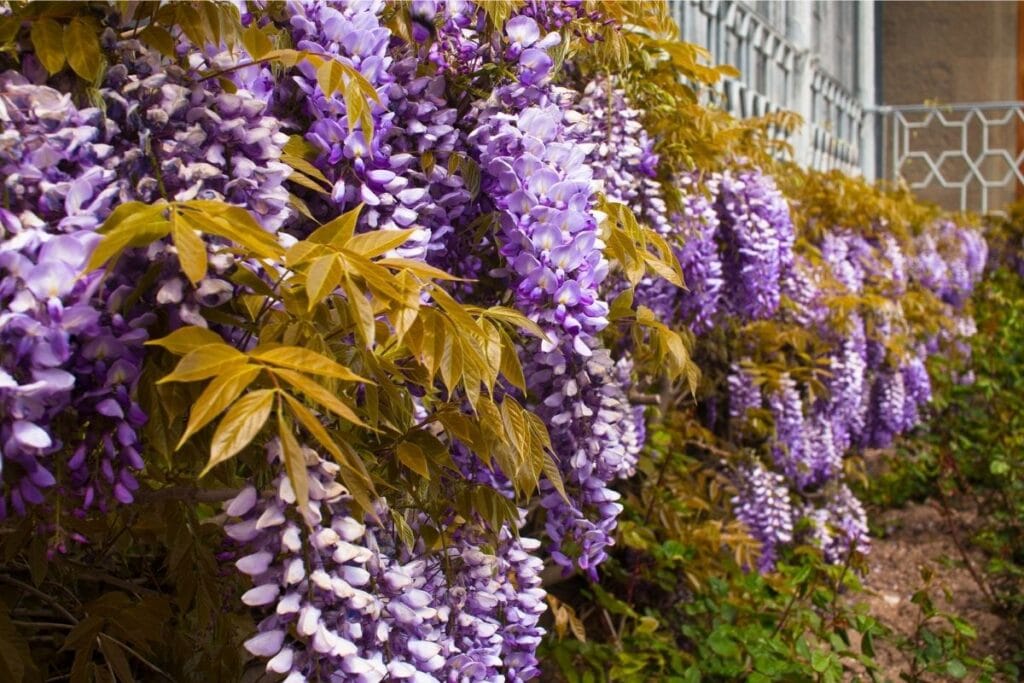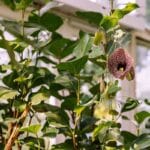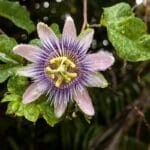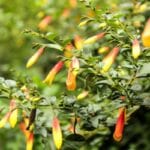Who hasn’t dreamt of having a fairytale-like garden? Imagine coursing through the landscape under a mass of beautiful flowers hanging down like a waterfall. With the right combination of plants, one can make this dream come true. One of the commonly used vines to achieve the dream-like garden theme are wisteria vines.
It is the perfect flowering vine that has a wide range of species to create the grandeur of a dream-like garden or to even make your patio look classy. Below is the information you need to know to achieve your dream garden design.
Botanical Information
Wisteria vines are widely used in landscaping as it is easy to propagate and low maintenance. Different species of wisteria vines may differ in various ways but they have things in common too. They all came from the Fabaceae family, commonly known as the pea family.
This deciduous perennial vine can be grown in USDA Zones 5 to 8 with the right care. The vine is introduced in gardens of Europe, North America, Asia, Oceania, and South America.

Leaves
As a deciduous vine, the wisteria vine sheds its leaves during fall. It does this to respond to cold temperatures. If the wisteria is evergreen, it is the Millettia reticulata, which commonly confuses people.
Wisteria vines have leaflets on opposite sides of the leaf stalk. The leaflets are further characterized by its dark green color, wavy margins, and long tapered tips. Older vines are dark gray with lenticels that are light in color. The combination of these features contributes to the wisteria’s distinctive leafy growth.
Flowers
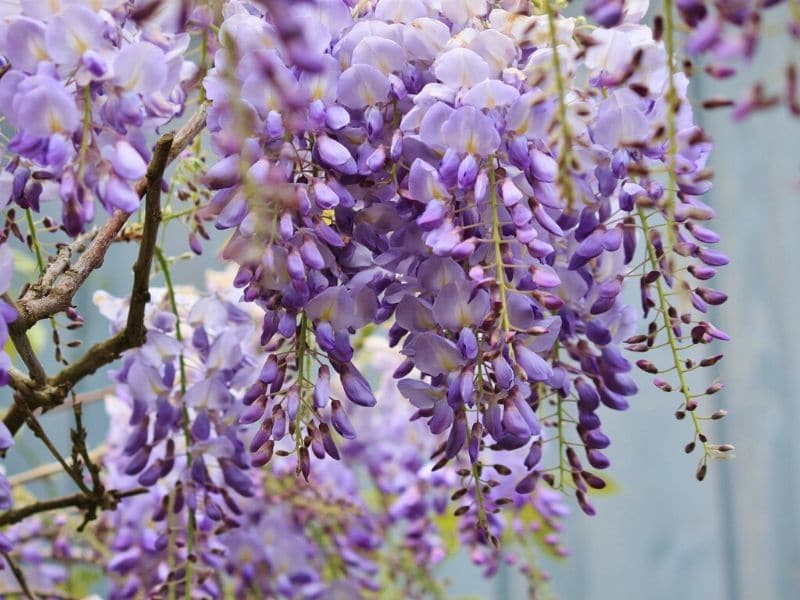
Wisteria flowers are famous for its fragrant showy purple flowers, which could also vary from pink, blue, bluish-purple, and white. Its clustered pendulous form helps create the waterfall effect of the flowers.
During spring, the wisteria trees will start to bloom and it may extend its beauty until summer. One of the common misconceptions about Wisteria is that it has yellow flowers.
However, wisterias do not have yellow flowers, those are usually the golden chain tree (Laburnum anagyroides). Instead, wisterias produce lovely flower buds that eventually burst into their signature colorful blooms.
Fruit and Seeds
During maturity, the flower gives rise to green to brown bean-like pods that contain seeds. It can extend from 4 to 6 inches long and ripen during the autumn season.
Growth and Development
Wisteria vine grows vigorously up to 20 meters high, given the right support. Its vast growth and development can either be a pro or a con depending on the situation. If the goal is to let it crawl and grow to serve a certain landscape purpose, it is a pro.
On the other hand, it can be a con if left unsupervised to twine onto existing shrubs or trees. Wisteria vines have a strong grip that can cause serious damage to a plant. Even more, so that it was reported to be invasive in Hawaii and 19 US states.
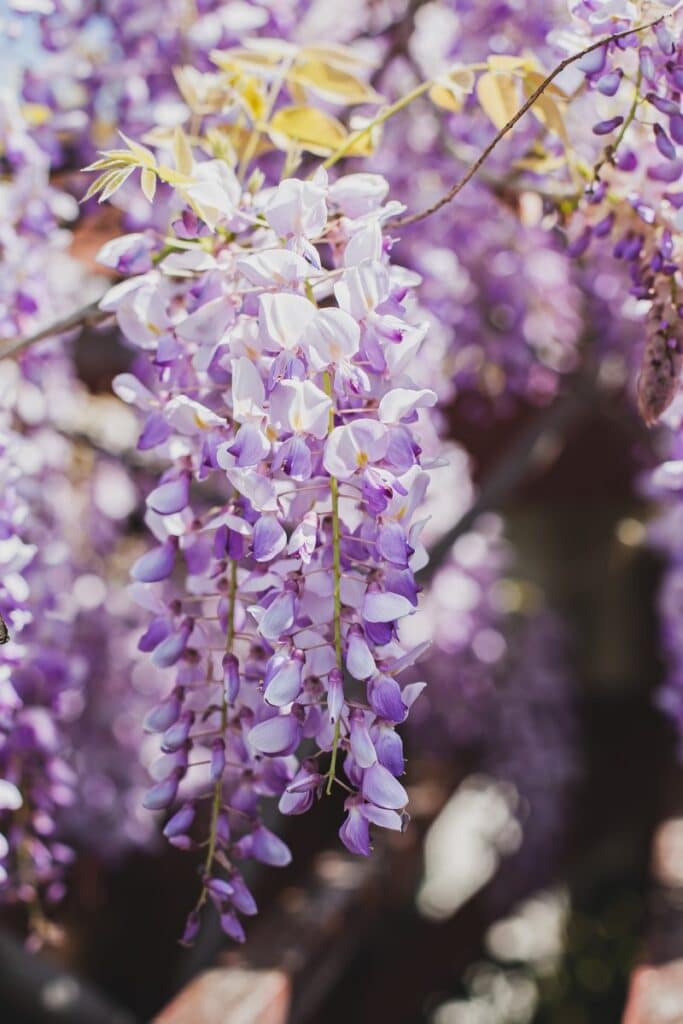
Grow and Care and Maintenance
Sun Requirement
Wisteria vines flourish when exposed to full sun and will surely bloom more beautifully. However, if placed under shaded areas, the vine should be exposed to full sun for at least 6 continuous hours for the plant wisteria to bloom.
Water Requirements
Wisteria plants need to be watered moderately, enough to develop a strong root system. It can tolerate short periods of drought but, on the other end of the spectrum, overwatering is a big no. Too much water, when accompanied by nitrogen-rich fertilizers, can also hinder the blossoming of flowers as it makes the plant create more foliage.
Temperature and Humidity Requirements
Growing wisteria in warm and humid environments is ideal. However, reports are stating that the vine can survive low temperatures up to -37 degrees celsius.
Fertilizer
Fertilizer application is not necessary for Wisteria vine’s growth but to be sure checking the soil’s nutrient content can be done. Fertilizers that are high in nitrogen will promote foliage growth but hinder flowering. On the other hand, phosphorus-rich fertilizers may be added to aid in the plant’s flowering,
Soil Requirements
Grow wisteria vines in well-draining, fertile soil is ideal. Loamy mixes with a good amount of organic matter like compost are ideal. Ensure the soil drains well to prevent root rot, as wisteria doesn’t tolerate soggy conditions.
A slightly acidic pH (around 6.0 to 6.8) is preferable but not strictly necessary. Amending clay soil with sand and organic matter and adding sand to sandy soil can improve drainage for optimal wisteria growth.

Propagation
Reproducing wisteria vines through its seeds is not recommended as it could take 15 years to bloom. The best way to propagate is by planting cuttings or by grafting. Adding root hormones can also aid in better and faster root development. Watering the plant too little can induce a shallow root system. Remember to give ample amounts of water as the plant creates an established root system.
Pruning
As a vine, attaching support for the wisteria to climb on is beneficial for its development and training. Wisteria tree can grow upright by training it with support, like a trellis, and trimming any side shoots. Keep in mind that this vine twines in a clockwise direction. Once reached the ideal height, cutting the tip will help stunt its growth.
In maintaining the wisteria vines, having a regular pruning schedule is recommended since it can grow too fast and might cause detrimental effects on the landscape. Removing dead plant parts and cutting back side branches to at least a foot is a good practice to control the wisteria’s growth. Suckers growing from the base of the plant should also be removed.
Potential Harm
Despite its majestic appearance, the wisterias can disrupt landscapes by twining and attaching to existing vegetation and killing it. This can be a serious weed problem if not controlled and one way of controlling it is by pruning it regularly. To eradicate, uprooting the plant manually or using herbicides can be performed.

Landscape Uses
The form and shape of the wisteria plant add a softness to the landscape. Also, the color of the flowers gives off a classy vibe for the landscape. As a purple vine plant, it can be a stand-alone plant or can be incorporated with different man-made fixtures such as arbors, pergolas, trellises, fences, and walls, as privacy screens. Wisteria vine is often seen used in decorating tunnel pathways in landscapes since it adds shade and is aesthetically pleasing.
Wisterias can also be trained as bonsai and serve as a specimen plant in the landscape. Wisteria bonsai tree is one of the very popular flowering bonsai trees.
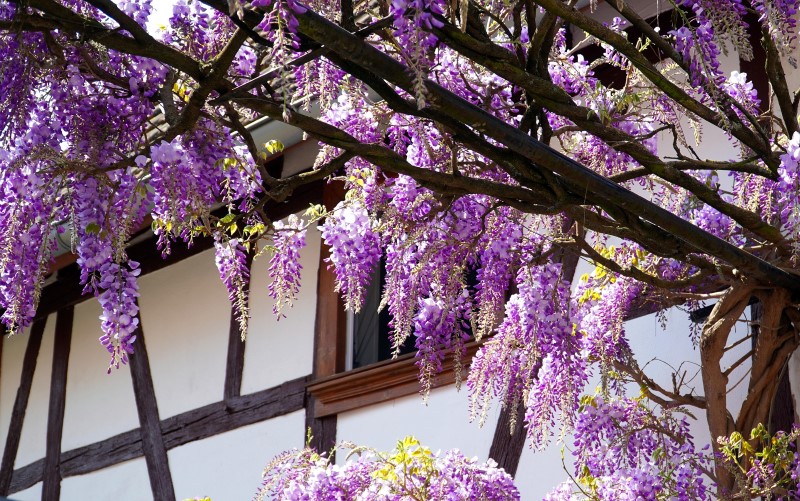
Identifying Differences Between Common Species and Cultivars
Proper identification of the plant is the first step to taking good care of your plant, which is why it is important to know the wisteria vine’s commonly known species.
Wisteria sinensis
The Chinese Wisteria vine, Wisteria sinensis, has 7 to 13 leaflets on opposite sides of the leaf stalk. Dense silky hairs cover the young leaflets but lose them as the leaflet matures. The vines wrap from left to right (clockwise). It has fragrant and showy purple flowers and grows vigorously. The Chinese wisteria can be commonly mistaken for different species, such as Japanese Wisteria, American Wisteria, and Kentucky Wisteria.
‘Prolific’
True to its name, this wisteria vine cultivar gives off prolific flowers that are lilac to blue in color. It also blooms faster than other cultivars and is grown in zones 5 to 8.
‘Alba’
The flowers for this cultivar are short and compact. It is white, fragrant, and pea-like. Being planted in zones 5 to 8 is best.
Wisteria floribunda
The Japanese wisteria, with the scientific name Wisteria floribunda, is different from the Chinese wisteria flower by twining counterclockwise and having shorter, and less fragrant flowers that are usually blue-violet in color. For its foliage, the Japanese Wisteria vine has fewer leaflets. The Japanese wisteria can form a massive trunk-like stem as it twists itself, which makes it good to train it as a bonsai.
‘Violacena Plena’
This cultivar is characterized by having blue-violet flowers that transition to pale purple that are showy and doubled. It is commonly grown in zone 5-9.
‘Royal Purple’
With its white compact flowers that can reach up to 20 inches in length, this cultivar can surely make you take a second look. Also, it has a very fragrant scent and is commonly grown in zones 4 to 9.
‘Lawrence’
This cultivar produces the most number of blooms with up to 160 pale blue-violet flowers. Each cluster of flowers can extend from 12 to 18 inches. Planting this cultivar in zones 5 to 9 will ensure its optimized growth.
‘Rosea’
This wisteria flower cultivar is the best for compact gardens as it grows slower at 2-3 ft per year.
Its flowers can extend up to 16 inches and are soft pink with the hint of lavender. It is most suitable for zones 5 to 9.
‘Longissima Alba’
From its name, this cultivar produces long white densely packed fragrant flowers. It can extend up to 20 inches in length and is perfect for the waterfall effect in the landscape. It is best grown in zones 4 to 9.
‘Show Showers’
Having this Japanese wisteria vine cultivar will make your garden look like it’s snowing even during early spring with its white flowers that resemble a pea. Zones 5 to 9 are the best places to grow it.
Wisteria floribunda have eye-catching cultivars such as Rosea, Show Showers, Longissima Alba, Royal Purple.
Wisteria frutescens
Another lookalike is the American wisteria, which goes by Wisteria frutescens in the scientific world, as it differs by having compact white flowers that are 6 inches in length that take the form of a pinecone. It also grows shorter than the Chinese and Japanese wisterias.
‘Nivea’
Its blooms can extend up to 6 inches and are compact white flowers. Zones 5 to 9 is favorable for this cultivar.
‘Longwood purple’
The cultivar blooms later than Japanese and Chinese wisteria flowers. However, it is worth the wait for its densely packed purple flowers that look like a grape. It is best for this cultivar to be planted in zones 5 to 9.
‘Amethyst Falls’
This American wisteria cultivar has a subtle scent and has bluish purple color. It blooms earlier during the first season but blooms weeks later than other cultivars as it matures. Zones 5 to 9 is best for this wisteria vine cultivar.
Wisteria macrostachya
Lastly, Wisteria macrostachya, commonly known as Kentucky wisteria, twines counterclockwise with scented florets that are pale violet. Its flowers bloom during late springs after all the leaves are formed. It is easier to manage and can survive on wet soils.
‘Blue moon’
This cultivar blooms all throughout the growing season if cared for properly. It gives clustered pale lavender flowers with a hint of blue and can extend up to one foot. Zones 3 to 9 is where it can flourish.
‘Aunt dee’
This cultivar blooms earlier than the other cultivars and gives off fragrant pale blue-violet flowers. Also, it’s flowers grow abundantly and can extend from 8 to 12 inches in length. Planting this cultivar in zones 4 to 9 is best.
‘Clara Mack’
The purity of its white flowers combines with dark green leaves makes it appear dream-like. It is best grown in zones 3 to 9.

Tips on Choosing the Right Wisteria Flower for the Landscape
Remember that functionality and aesthetics should go hand in hand in a landscape design. Hence, you must know that in planning a landscape design, it is important to know your plant’s characteristics and check if it is suitable for its supposed function.
For example, if planning to use the Wisteria flower as a privacy fence, it is important to choose a species that has more leaflets and grows faster than other species like Chinese Wisteria. On the other hand, if it will serve as a specimen plant, one can choose any species that could fit one’s preferred color and vibe.
FAQs
Do wisterias like sun or shade?
Wisterias generally prefer full sun to thrive and bloom prolifically. While they can tolerate some shade, they may not flower as abundantly in shady conditions.
Is wisteria easy to take care of?
Yes, Wisteria can be moderately easy to care for but requires some attention to pruning and training to maintain its desired shape and prevent it from becoming invasive. With proper pruning and support, it can reward gardeners with stunning blooms.
Is wisteria poisonous to humans?
All parts of the wisteria plant, especially the seeds and pods, contain toxic compounds called lectins and wisterin, which can cause mild to severe gastrointestinal distress if ingested. It’s essential to keep wisteria away from children and pets and handle it with care.
Can wisteria grow in pots?
Yes, wisteria can grow in pots, but it requires a large container with good drainage and support for its climbing habit. Regular pruning wisteria and training are necessary to manage its growth and prevent it from becoming root-bound. Choose a compact or dwarf variety for container gardening to control its size more effectively.
Up next: Wisteria Flower Meaning and Symbolism
*image by nilovsergei/depositphotos & Pixabay

